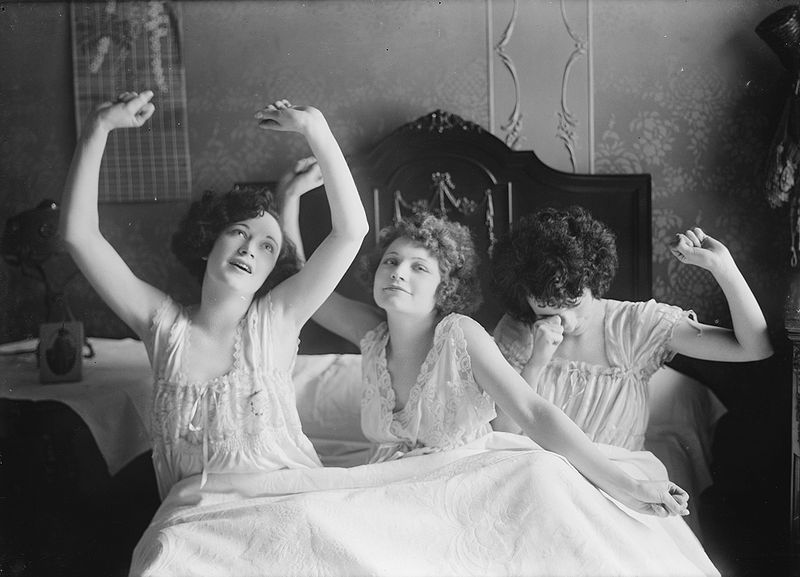I like to go to sleep at 3 a.m. or so and rise at about ten, but society frowns on such owl-ish patterns. From “Up All Night,” Elizabeth Kolbert’s new New Yorker article about so-called sleep disorders, one theory about why we all act like zombies:
“The Slumbering Masses, by Matthew J. Wolf-Meyer, takes a more polemical view of what might be called the ‘sleep question.’ Wolf-Meyer, an assistant professor of anthropology at the University of California at Santa Cruz, spent four years interviewing just about everyone involved in sleep research: physicians, technicians, patients, members of patients’ families. He concludes that what Americans have come to think of as sleep problems are mostly just problems in the way Americans have come to think about sleep. ‘Normal sleep is always pathological sleep, or at least potentially so,’ he writes.
Wolf-Meyer refers to the practice of going to bed at around eleven o’clock at night and staying there until about seven in the morning as sleeping ‘in a consolidated fashion.’ Nowadays, adults are expected to sleep in this manner; anything else—sleeping during the day, sleeping in bursts, waking up in the middle of the night—is taken to be unsound, even deviant. This didn’t use to be the case. Until a century and a half or so ago, Wolf-Meyer observes, ‘Americans, like other people around the world, used to sleep in an unconsolidated fashion, that is, in two or more periods throughout the day.’ They went to bed not long after the sun went down. Four or five hours later, they woke from their ‘first sleep’ and rattled around—praying, chatting, smoking, or making love. (Benjamin Franklin reportedly liked to spend this time reading naked in a chair.) Eventually, they went back to bed for their ‘second sleep.’
Wolf-Meyer blames capitalism in general and American capitalism in particular for transforming once perfectly ordinary behavior into conduct worthy of medication. ‘The consolidated model of sleep is predicated upon the solidification of other institutional times in American society, foremost among them work time,’ he writes. It is ‘largely the by-product of the industrial workday, which began as a dawn-to-dusk twelve-to-sixteen hour stretch and shrank to an eight-hour period only at the turn of the twentieth century.’ So many people have trouble getting enough sleep between eleven at night and seven in the morning because sleeping from eleven to seven isn’t what people were designed to do.”

